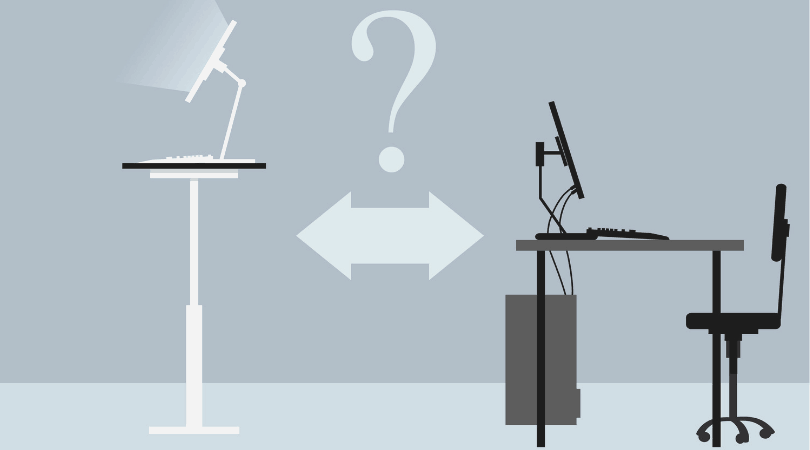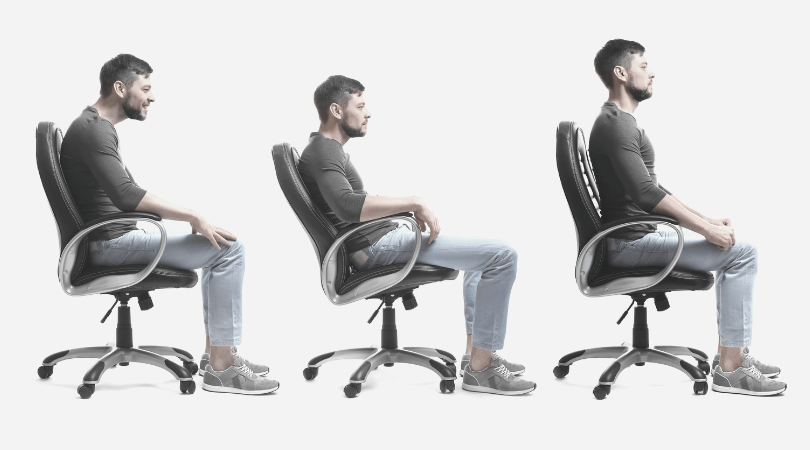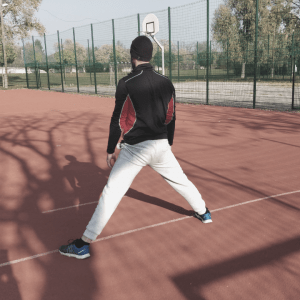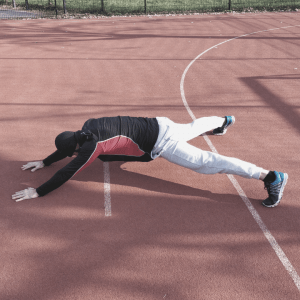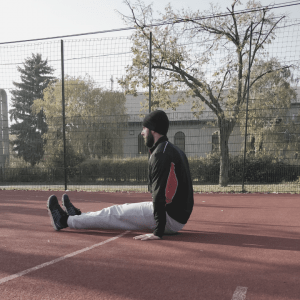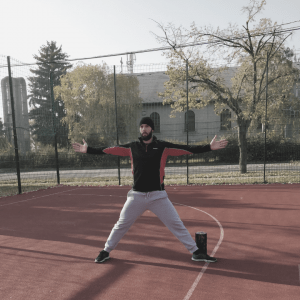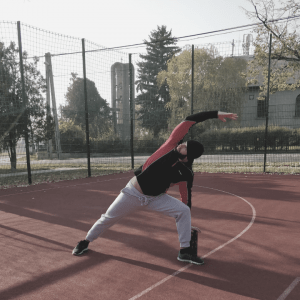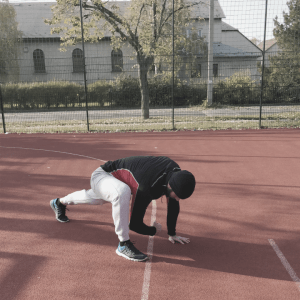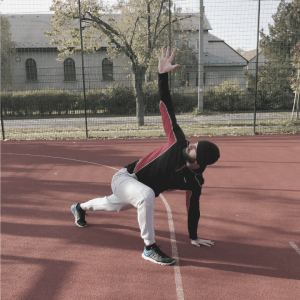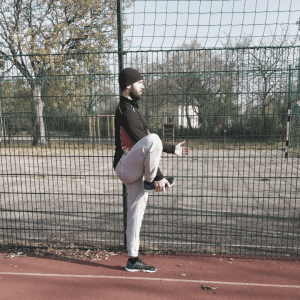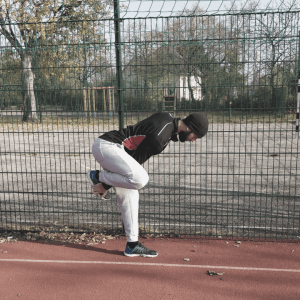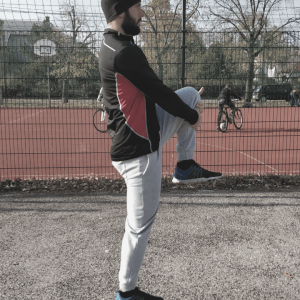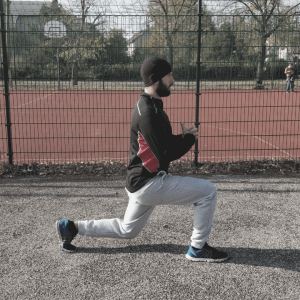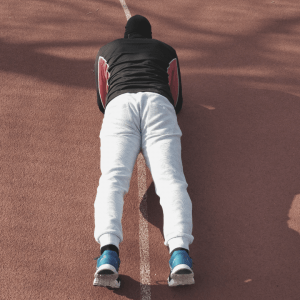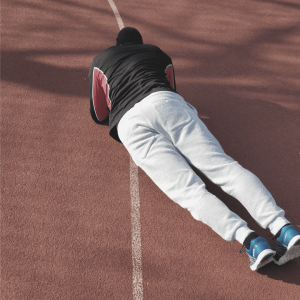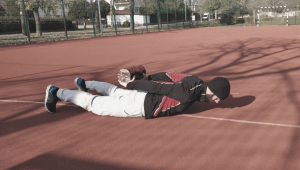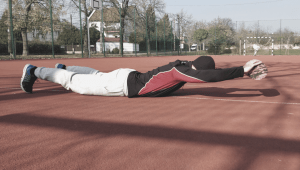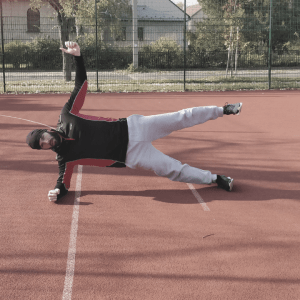Sitting has got really bad rep nowadays and certainly with a good reason. But before we jump into the exercises that balance out everything so we can turn our attention back to a desk job, let’s think it over for a sec.
There has been an endless amount of research contributing to our knowledge of the effects of prolonged sitting. I have listed a few we usually come across when delving into the topic:
- Weight gain
- Cardiovascular disease
- Diabetes
- Weakened brain function
- Depression
- Chronic physical alterations
- Muscle atrophy
- Risk of early mortality
- Even cancer
With all the above effects do you really think a few moves will undo all the harm so you can start with a new tab? Well, it depends. And it depends on many factors. Truth is, as you may have guessed, the average afternoon fitness class won’t move the needle much. The goal of this article is to give you one of the many concepts on how it’s possible to even out the negative effects of a desk job and allow you to compose your own routine based on a few principles.
Now you could go through all of the above effects, find a lot of information about each, some of them backed by research, some just believed to be caused by sedentary lifestyle, but most importantly all of it heavily depending on too many linked circumstances.
What doesn’t need to be backed up by science though is the overall poor health, posture, and available energy of workers swarming in and out of the office buildings. In this article, proving the negative accumulative effects of inactivity doesn’t need any more context than that. When you look over a packed office, the sight speaks for itself. Bad posture is a problem you can rarely avoid nowadays, and it’s probably going to get worse in the near future.
Why Just Sitting?
All prolonged static positions are bad for you (except when you sleep, but even then I bet it feels great to change sides), but probably none of them are as sneakingly dangerous as sitting. Take standing for example. It is often thought to be a better choice when practical. But then you hear about it’s drawbacks and might think, to hell with it, if it’s not substantially better why bother at all.
A few drawbacks of prolonged standing:
- plaque build up in the carotid arteries aka carotid atherosclerosis
- swollen, enlarged veins aka varicose veins most often occurring on the legs and feet due to high pressure attributed to standing
- reduced fine motor skills due to higher stability demands
While the above points are surely valid, rather the problem is with the dosage. Sitting here and there won’t do you any harm, but the problem is that you can spend hours in a comfortable office chair before feeling the need to change position.
And that’s the big issue – that it’s so damn comfortable! Have you ever tried standing statically for more than 10 minutes without moving a leg or switching your balance from one leg to the other? Probably not. The initial discomfort can quickly build even to a painful level if you haven’t been constantly doing micro-changes in your position.
This is why standing, in my eyes, is not as harmful as sitting. Although it’s not quite worthwhile to compare the two, because of the above differences of their nature; sitting with the possible risk of being completely static, while constantly moving while standing. With the latter, it’s just much more likely that you’ll do more frequent, larger range and higher velocity movements.
The good thing is that you don’t necessarily have to pick one unless your job strictly requires it. The more you change between sitting, standing and exercising the better it is for your health, and thus for long-term productivity. I know, at first, it sounds like a lost case, but it all just comes down to the circumstances of your work, most importantly time management and productivity.
Before we assume it’s nearly impossible to create time for more frequent physical activity, we have to assess our productivity first – in other words, our work efficiency over time. According to a study people are able to turn their best attention to a task for no longer than 6 hours per week. Seems like we don’t necessarily need to work more, in fact, in many cases you can achieve more with less if you just improve your efficiency – which comes down to improving your focus. That is, try to minimize the time cost of interruption. Did you know it takes an average of about 23 minutes to effectively catch up with your task after interrupted?
Fortunately, there are many ways to improve your focus. One of the fundamental principles that researchers seem to agree on in the topic is the need for frequent breaks – which might sound counterproductive. The reason for that is the advantage of unitasking over multitasking. Try to categorize similar tasks on the same day, then break them down to smaller chunks until there’s only one aspect to focus on at a time. This makes it more likely that you don’t wander away with your thoughts.
Also, a study by a social networking company conducted that the most productive employees don’t work longer hours, in fact, they work even less than others. What made them so productive is a one-third work/rest ratio, more precisely 52 minutes of intense focus on the task at hand, and 17 minutes free time spent as unrelated to work as possible, like stepping away from their desk, taking a walk, or, you know, maybe even exercise. If 52 minutes sounds like a lot you might want to dig a little into the so-called Pomodoro time management technique which suggests 25 minutes of uninterrupted flow using 6 normative principles for best results.
As you can see, it’s not impossible to create more free time, it’s only a matter of self-discipline and smart management. Now that we know what’s good for your employer, let’s turn our attention back to what the body has to say about all of this.
What to Put in Your Anti-Sitting Pill?
No, not the one on the right!
For the general public, chances of being able to fully avoid sitting are next to none. The World Health Organisation suggests 150 minutes of moderate-intensity physical activity a week. However, many health experts agree that even an hour of exercise per day can’t counterbalance a typical 8-10 hours spent inactive. And that may just be the key. Those negative effects happen during time spent without any substantial movement! It’s like changing the oil in your car every 20,000 miles instead of the recommended 5000. It will not offset the damage.
People know that it’s not good for them but to counter the damage, they just push the throttle a little harder. So instead of going for a 40 minute light jog interspersed with some skips/carioca they choose to attend an intense Crossfit class. Because if I’m a desk jockey, there’s certainly more to make up for, right? And it’s definitely hard not to fall prey to this line of thinking in an era when the sole measure of fitness success is the number of calories burnt or a record high heart rate.
Instead, think of it like this: by the time you start your afternoon fitness class, your chances to make up for an average office day is non-existent. That doesn’t mean it’s not worthwhile to train on that day, but you are not going to make up too much for the time spent inactive. Instead, at least you aren’t spending even more time inactive and you can get stronger for tomorrow.
As usual, the devil lies in the details. It’s not about asking you to spend more time training (although that definitely would be a nice thing), but rather how the same amount is distributed during your day.
Frequency
The body is a perpetual adaptation machine. Every second it either deteriorates or builds itself up. It’s only a matter of what we ask it to do. If you want to acquire new skills – should it be taking up juggling, olympic snatch, playing an instrument or upping your chess game, one of the crucial components again is frequency.
In this case, you’ll want to learn the anti-sitting skill. Or more precisely, anti-immobility.
The only way to become better at it is to frequently interrupt immobility. Not vigorously spinning a pen, but rather standing up, stretching, moving around, anything that feels like putting life back into your body.
According to the American Heart Association, simple regular interruption of immobility leads to better success than if the break is of planned nature, like a scheduled exercise routine. Although that may just be due to simple human behavior – we don’t like musts.
But just because it’s more likely to work, that doesn’t mean it’s the best way to soothe the problem.
And here comes my second assertion: the other key element is emphasizing
Range of Motion
Meaning that try to use your joints’ full movement capacity, or very close to it. Otherwise, you could end up very weak the second your joints get close to their end range. This is one of the reasons behind ankle sprains and traumatic hip/groin injuries. The cause is that your joint is not used to resisting higher forces in that far angle, simply because we don’t use them much in that range.
So while it’s OK to do random movement, it would be even nicer to maintain posture and basic human movements, both of which have a direct effect on your organs, metabolism and overall well being, as well as help prevent musculoskeletal disorders. Also, by challenging your end range with whole-body movements, you stimulate your nervous system for more effective signaling, which in turn provides more control over those ranges. Again, if you don’t use your body’s available ranges regularly throughout their full capacity, you lose them. Dead simple.
As our brain is result-oriented, it will force your body to find alternative ways to carry out everyday tasks. Your body sort of bypasses restrictions in your mobility, and that’s the beginning of an ugly downward spiral. It’s one of the reasons why some people in their 60’s have their available range – and strength control at those ranges – so reduced that they can barely step up a stair. That’s why a 5-minute workout on a stationary bike (not like you have those in your office) won’t cut it, not even from the circulation angle.
Why is that?
Every once in a while, people should sacrifice comfort on the altar of doing a more complete workout, let’s say in the form of thrusters or burpee-pullups. Although that example is a bit extreme, the point is, you can’t truly talk about whole body movement if your upper body is anchored to a handlebar like in cycling. We need global blood flow and more joint movement eliciting synovial fluid and infusing nutrients to more and more parts of your body.
Without going deep into it, it’s all about energy. There are certainly more and more people who attribute improved quality of life to practicing yoga. We just can’t pass by its positive effects – igniting energy flow throughout the body that would otherwise be restricted due to tissue pressure, lack of viscosity, lack of nerve function or inadequate hormonal state. Practicing the skill of fully utilizing your available natural range helps to clear these blocks.
Volume
My third ingredient to the antidote for sitting is volume. Think of frequency and range of motion as ignition, or a spark. It’s turning on the car’s engine. It’s signaling the body for change. But the amplitude of this signal – thus the extent of the positive adaptations we can expect from the spark – depends on how long we keep the engine running.
It makes sense to keep repetitions high enough to at least achieve “operating temperature”, to provide meaningful stimulus. The effectiveness of your workout doesn’t have to come solely from repetitions in their classic interpretation. If you stay in an active stretch for long enough, that’s as good as high repetitions for me – its usefulness is not necessarily measured by the distance your limbs travel back and forth.
Lastly, the health benefits of inverted positions are also worth mentioning – although for practical reasons they’re out of the focus of this article – a few of which are:
- “Taking the pressure off your heart”, better circulation, improved venous return
- Reduced blood pressure and heart rate
- Strengthens immune system by better lymphatic functioning
- With increased blood flow promotes cognitive abilities and energy
- Boosts focus and relaxation at the same time
- Improves balance
- Psychological benefits by looking at things from a different perspective
Definitely give them a try at home, the most obvious one to start with is the shoulder stand aka Sarvangasana.
The bottom line is, if you only have a few minutes every hour to invigorate your body, you should pick exercises that give the best bang for your buck – ones that challenge your mobility, stability, kinesthetic awareness and proprioception.
For this reason, I focused on two things with my exercise selection. They’re either multi-joint exercises or challenge full-body stability/balance. Traditional suggestions like neck/wrist/ankle circles or nerve floss drills are intentionally left out this time, although they are powerful tools and should not be neglected either. Maybe in another article.
Now, I know I know, these exercises are hardly for anyone wearing a suit. Still, using the above principles you can build your own routine tailored to the conditions of your work environment. If it’s 20-20 arm circles back and forth that’s just as fine. My point here is that you should favor those routines that, in some way, invigorate the whole body, hence popping fingers and walking to the coffee machine is not gonna move the needle much.
Exercise List
Without further ado, here are 12 moves in no particular order that I think could keep your body refreshed during long office hours. Just stand up every 30 minutes if possible and complete any one exercise from the list below in a repetition range high enough to make a change. 20 repetitions may seem a bit high at first, but you won’t really elicit the necessary response from your body with less.
The upside is that you don’t need to complete 20 reps in an uninterrupted row (hint: side plank leg raise?) – it’s ok to use a split of 10-10, or even 5-5-5-5, keep switching sides if the exercise is bilateral. What matters is completing the prescribed volume.
Hand Walkout in Split Stance
Repetition: 15
Make sure that throughout the handwalk keep your legs extended, glutes tight, pelvis tilted backward to prevent overarching at your lower back.
Dynamic Yoga Tables
Repetition: 20
In both positions, the chest is up and your arms/shoulders actively push away from the ground as much as possible. At the table position also squeeze the glutes and tilt the pelvis backward while sucking in the lower abdomen and breathing in (yes you read it right). Exhale as you sink back to the starting position.
Utthita Parsvakonasana – kind of 🙂
Repetition: 20-20
As you can see I’m a born yogi. If you aren’t, just use a support under your anchor arm behind your leg. Keep the rear leg fully extended and try to actively turn towards the sky with your upper body while opening your upper armpit. Imagine your vertebrates are pulled away (stay tall) from head to tailbone creating space in your spine.
Spiderman with Overhead Reach
Repetition: keep lifting your arm for 1 minute each side. Keep both arms extended as well as your rear leg, look towards your moving hand at the same time, rotate through your upper back, twisting the upper half of your spine. Keep the chest up, shoulders pulled down (it’s not about swinging the arms, but rather thoracic extension and rotation.
Single Leg Lever
Repetition: 20/leg
This one is great for glute activation, stand tall, keep one knee as high up as possible then hinge at the hip joint pushing your hips back while keeping your back flat. Only slightly bend the down knee, then come back to the starting position fully extending the ground leg, while squeezing the muscles on your front thigh and glute.
High Knee Pull to Reverse Lunge
Repetition: 20-20/leg
Same cues for the starting position as for the Single Leg Lever exercise, progress to a lunge, keep your trunk tight and maintain an upright posture. Don’t let the knee cave inwards, keep it in line with your foot. Keep your pelvis neutral/slightly shifted forward.
Plank Side Step
Repetition: 20 each side.
Keep your forearms parallel, keep actively pushing away from the ground, legs completely extended step to the side then back to middle and to the other side. Don’t drop your belly, keep your lower back flat.
Step Throughs
Repetition: 20 each side.
Whichever arm is anchored to the ground should actively keep pushing away, keeping the shoulder tight. Step through with one leg, the same time let go with the opposite arm, keep the chest lifted and shoulders down. Get back to the mid position then start over with the other side.
Prone Arm Circles
Repetition: 20 each direction
Grab anything that you can hand over from one arm to the other (no more than 4lbs), lift your chest slightly away from the ground then start circling around with your arms, keeping them as high off vertically as you can. Keep the glutes tight, maintain a neutral neck.
Side Plank Leg Raises
Repetition: 20-20
Get to a side plank, actively keep pushing away from the ground with your anchor elbow, keeping the shoulder engaged. Keep the legs extended, lift the upper leg without dropping your hip vertically or horizontally deviating from your straight line. Lifting your leg up should not cause any other change in your position. If a full side plank is too difficult, instead of contacting the ground with the edge of the down foot, put the knees down keeping them 90 degrees bent. Make sure to keep the knees, hips, shoulders aligned in one straight line.
Upward/Downward-Facing Dog
Repetition: 20
Two opposite moves; when looking up, breathe out, imagine that your spine is extended and arched back evenly to avoid points where you feel more pressure/pain (e.g. lumbar spine). The more even the distribution of force throughout the entire spine the better. It’s a global arch, don’t think about parts, think about the whole. If you feel comfortable with it keep the knees lifted off the ground. When looking down breathe in, splay your fingers and plant your palms and fingers firmly on the ground. Try to push your midsection up by hinging at the hips as opposed to flexing your spine. Keep your spine neutral, and heels pushed towards the ground, even if you have to slightly bend your knees in case your hamstring wants to blow up.
Birddog
Repetition: 20 each side
Assume the quadruped position, hands/legs hip-width apart, hands right below shoulders, knees below hips. Lift the opposite arm and leg until they’re about parallel to the ground.
It’s all about preventing the lateral and/or anterior-posterior shift of the pelvis while challenging this initial position with the movement. It’s not about how high you can lift your limbs but whether you can maintain a neutral upper back spine/pelvis/lower back while switching between sides. You should feel it through your core working to keep the balance.
I could go on with the listing forever as there are really endless exercises that are beneficial, so long you are doing them frequently and regularly. I highly encourage you to create your own routine tailored to your lifestyle with the discussed three principles in mind.
One more thing. If you have the option to sit on the ground, try to go with that. It’s oftentimes better than standing, as it helps you revive your hips and overall flexibility. Also, as a good side-effect, you’ll find yourself constantly moving around as if you had just stolen a beehive.
I hope you find this article helpful.
Have a nice day!


